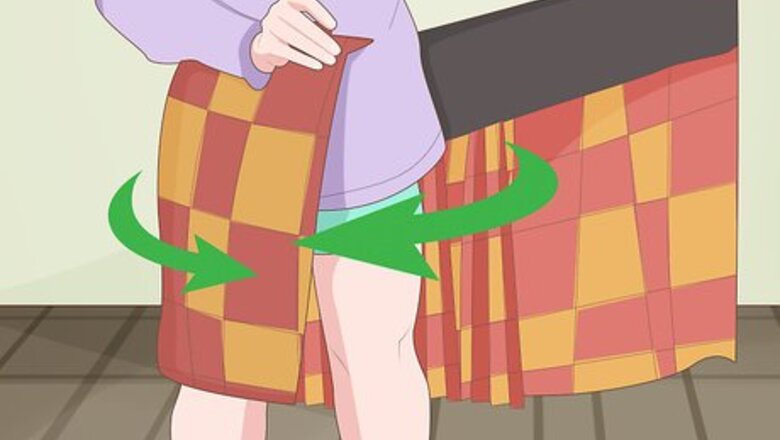
views
The Kilt
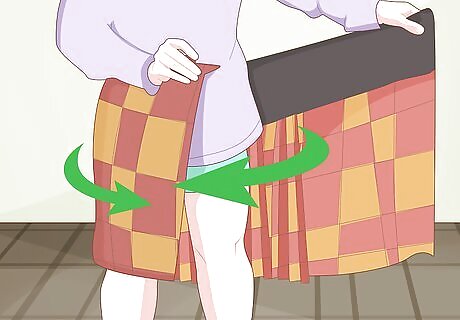
Wrap the kilt around your body with the pleats to the back. The top of the garment should be situated at the natural waist; the two aprons will overlap in the front. It should hang around your knee. Take your right arm and wrap it around your front. The edge of the right should meet up with the left, where there is a small hole in the lining for a strap to go through.
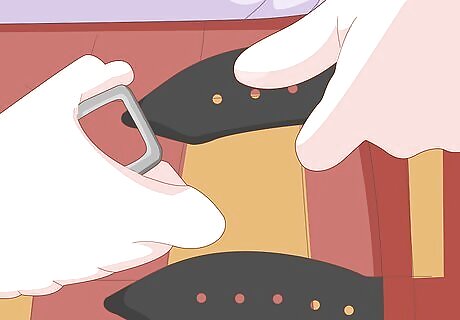
Fasten the kilt by buckling the aprons. Most Kilts[1] have a leather strap on the right apron, which is often called the under the apron. Pull the strap through to the outside until it's comfortable. You should be just able to get your thumbs inside the waistband. Fasten it to the buckle, just like a belt, at the outer edge of the left waist. With your left hand on your right hip, fasten the leather strap on the left apron, or front apron, to the buckles on the right; usually, there will be two. Do the top strap first. If your kilt features a third strap further down the right hip, fasten it to create a smooth fit across the stomach. Make sure it's not bunching toward the top or along the buckles.
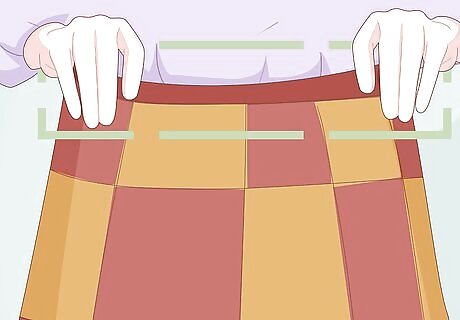
Adjust the kilt. If you have buckled the kilt correctly, the fringed edge of the kilt should be along the right side and the kilt should be centered on the body. Most kilts feature a pivot point in the tartan in the center of the front apron. This is the place where the tartan pattern mirrors itself. This pivot point should be in the center of your body. It should have a good A shape to it. Adjust as necessary, making sure that you're comfortable and everything is laying correctly.
The Kilt The Extras
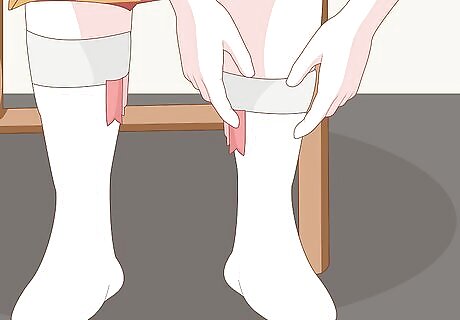
Put on the kilt hose, garters (an elastic band) and flashes (colored ribbons). Generally, keep the flashes with the kilt they match. Pull the kilt hose, which resemble knee socks, over the knee before you deal with the other two pieces. Fasten the garter and flashes just below the knee. The flashes should be off to the outside of the leg. Fold the kilt hose to below the knee about 3-4 fingers down and over the garter, displaying a few inches of the flashes. Smooth it all out and adjust as necessary, making sure both sets of flashes are displayed at the same angle. eg: Left Hand at 11 am, Right Hand at 1 pm.
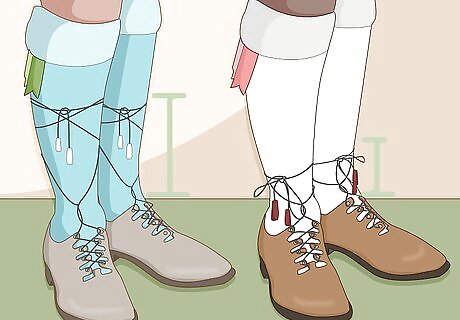
Put on your brogues. Don't tie them halfway up your legs! There are two ways to tie them; choose the one that appeals most to you. The High-Front Tie: Start by making sure your laces are the same length. Tie half a knot, keep some tension on the laces, wrap them around the back of your ankle, twist once or twice and then again around the front,(sometimes around the back twice, depends on laces length)making an X.The when back at the front again, tie it off to the side of the shin bone with a Half Hitch Bow is best. The Low Tie: Follow the steps described in the High-Front tie method, but scrunch everything down so that it remains around your ankle instead of up your calf. With this method, tie in a bow or a half hitch bow.
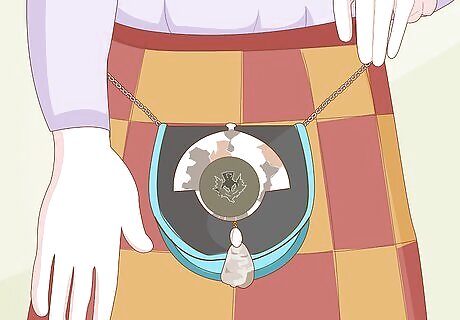
Attach the sporran. A sporran is a leather or fur pouch that is traditionally worn at the front of a kilt. Fasten the sporran strap using the loops at the back of your kilt. The sporran should be centered and hang about 1 hands width below the bottom of the Waist Belt. Otherwise, place the sporran at the back of your body and fasten the buckle in front of you. Swing it around so the sporran is now resting on your abdomen.
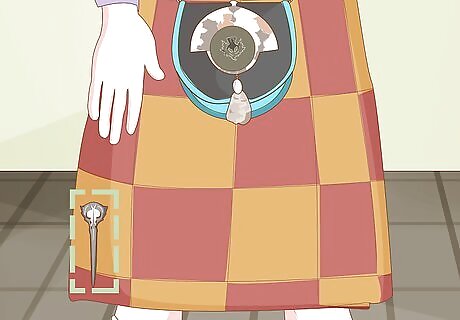
Attach your favorite kilt pin. They're available in a huge variety of styles and range from the classic to the contemporary. Pin your kilt pin through the front apron only. Pin it 4" (10 cm) up from the bottom hem and 2" (5 cm) in from the side. In addition to being decorative, the kilt pin's weight helps keep the kilt from flapping, preserving your modesty when a breeze whooshes by.
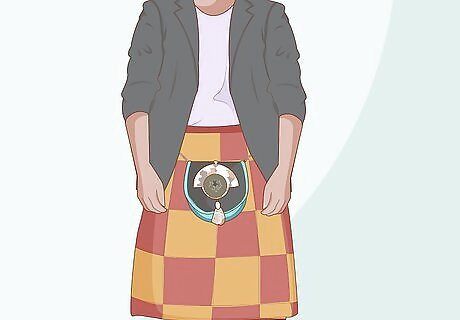
Put on your jacket and vest. This part is fairly self-explanatory. The only thing to remember is that in the back of the vest there's a little strap that can be adjusted to your size. Use it; you'll look better if the vest fits you right. For less formal occasions, the waistcoat is unnecessary. Use your judgment.
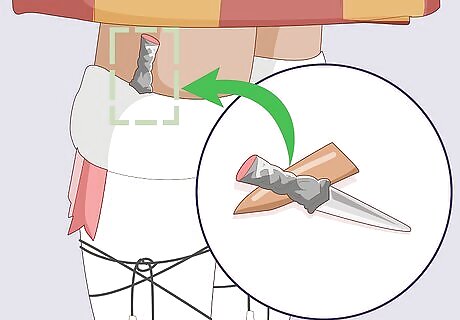
Don't forget your sgian dubh! That's your knife (a traditional part of Highlands attire) -- arguably the most exciting part. This little dagger goes in your right sock if you're right handed, left sock if left handed. If you have a kilt pin, it's a good idea to have it match. Push it down into your sock, just enough to have about 1 inch of the handle showing.



















Comments
0 comment